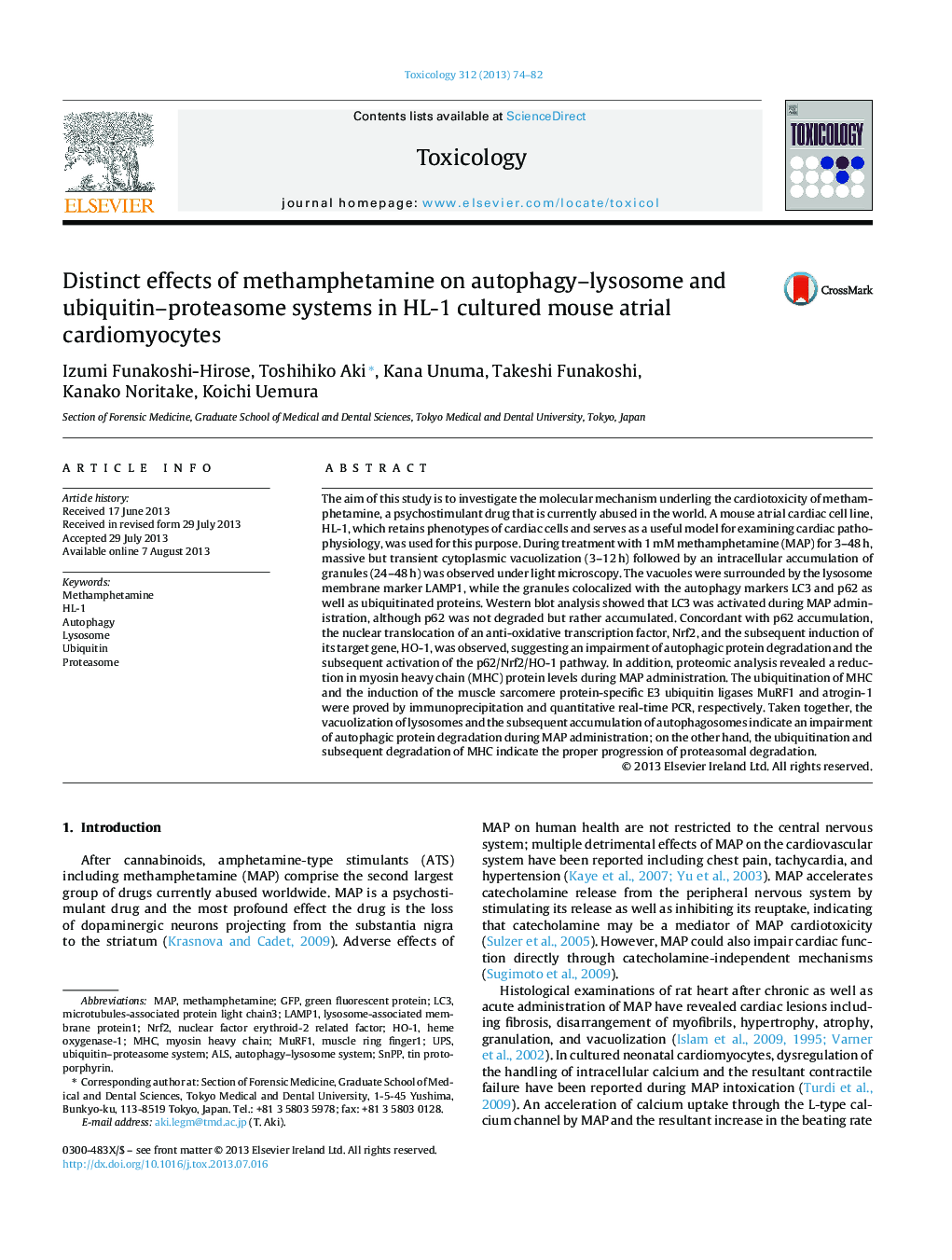| کد مقاله | کد نشریه | سال انتشار | مقاله انگلیسی | نسخه تمام متن |
|---|---|---|---|---|
| 2595577 | 1562344 | 2013 | 9 صفحه PDF | دانلود رایگان |

• The psychostimulant drug methamphetamine is also known to cause cardiovascular injuries.
• Methamphetamine cardiotoxicity was examined using HL-1 mouse atrial cardiomyocytes.
• Methamphetamine impairs the autophagy–lysosome protein degradation system.
• Methamphetamine causes myosin heavy chain degradation by the ubiquitin–proteasome system.
The aim of this study is to investigate the molecular mechanism underling the cardiotoxicity of methamphetamine, a psychostimulant drug that is currently abused in the world. A mouse atrial cardiac cell line, HL-1, which retains phenotypes of cardiac cells and serves as a useful model for examining cardiac pathophysiology, was used for this purpose. During treatment with 1 mM methamphetamine (MAP) for 3–48 h, massive but transient cytoplasmic vacuolization (3–12 h) followed by an intracellular accumulation of granules (24–48 h) was observed under light microscopy. The vacuoles were surrounded by the lysosome membrane marker LAMP1, while the granules colocalized with the autophagy markers LC3 and p62 as well as ubiquitinated proteins. Western blot analysis showed that LC3 was activated during MAP administration, although p62 was not degraded but rather accumulated. Concordant with p62 accumulation, the nuclear translocation of an anti-oxidative transcription factor, Nrf2, and the subsequent induction of its target gene, HO-1, was observed, suggesting an impairment of autophagic protein degradation and the subsequent activation of the p62/Nrf2/HO-1 pathway. In addition, proteomic analysis revealed a reduction in myosin heavy chain (MHC) protein levels during MAP administration. The ubiquitination of MHC and the induction of the muscle sarcomere protein-specific E3 ubiquitin ligases MuRF1 and atrogin-1 were proved by immunoprecipitation and quantitative real-time PCR, respectively. Taken together, the vacuolization of lysosomes and the subsequent accumulation of autophagosomes indicate an impairment of autophagic protein degradation during MAP administration; on the other hand, the ubiquitination and subsequent degradation of MHC indicate the proper progression of proteasomal degradation.
Journal: Toxicology - Volume 312, 4 October 2013, Pages 74–82